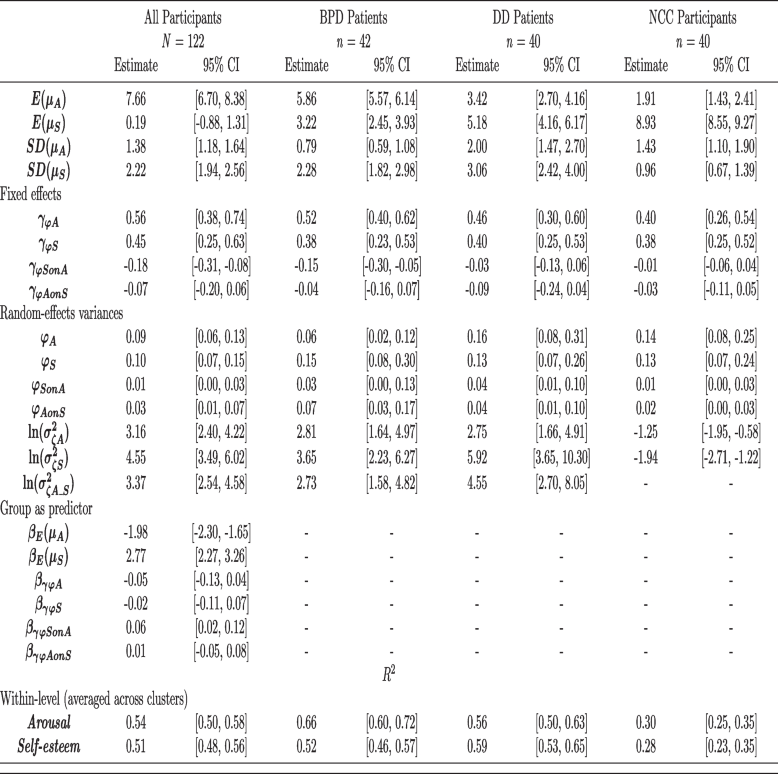
- SEM Structural equation model. All parameters are unstandardized parameters and denote posterior medians. The 95% CIs denote Bayesian credibility intervals. R2 measures refer to explained variance in arousal and self-esteem on the within-level. Arousal and self-esteem were assessed on 0 to 10 scales. Group (1 = BPD, 2 = DD, 3 = NCC). µA = person-specific mean of arousal across measurement occasions, µS = person-specific mean of self-esteem across measurement occasions, γφA = average autoregressive effect (fixed effect) of arousal, γφD = average autoregressive effect (fixed effect) of self-esteem, γφSonA = average slope (fixed effect) of the regressions of self-esteem on arousal at time t-1, γφAonS = average slope (fixed effect) of the regressions of arousal on self-esteem at time t-1, φA = random, person-specific autoregressive effect of arousal, φS = random, person-specific autoregressive effect of self-esteem, φSonA = random, person-specific slope of the regressions of self-esteem on arousal at time t-1, \(\mathrm{ln}({\sigma }_{\zeta A}^{2})\) = logarithm of the random, person-specific innovation variance of arousal (including measurement error), \(\mathrm{ln}({\sigma }_{\zeta S}^{2})\) = logarithm of the random, person-specific innovation variance of self-esteem (including measurement error). \(\mathrm{ln}({\sigma }_{\zeta A\_S}^{2})\) = mean of the log of covariance between the random innovations of arousal and self-esteem at the same time point

